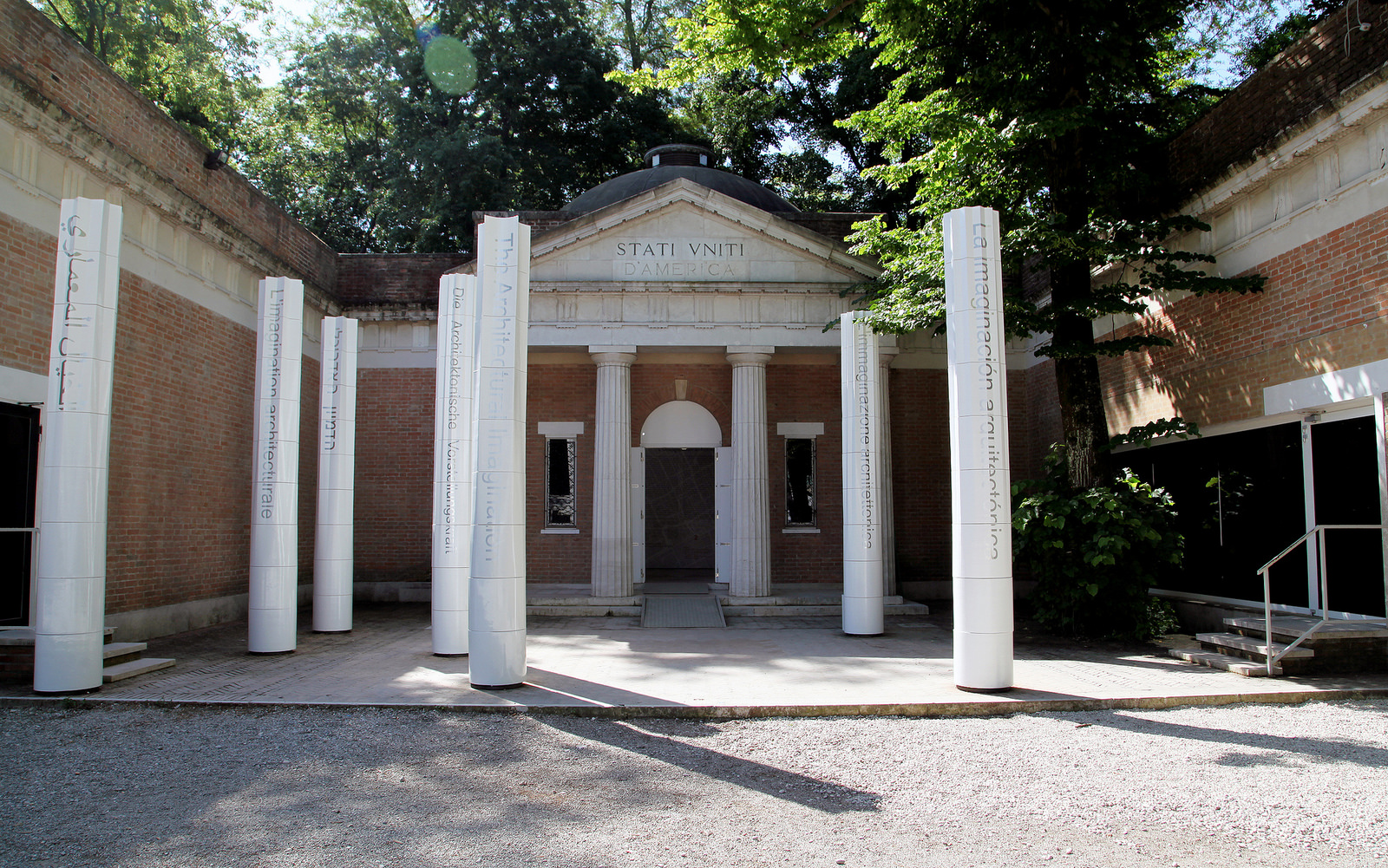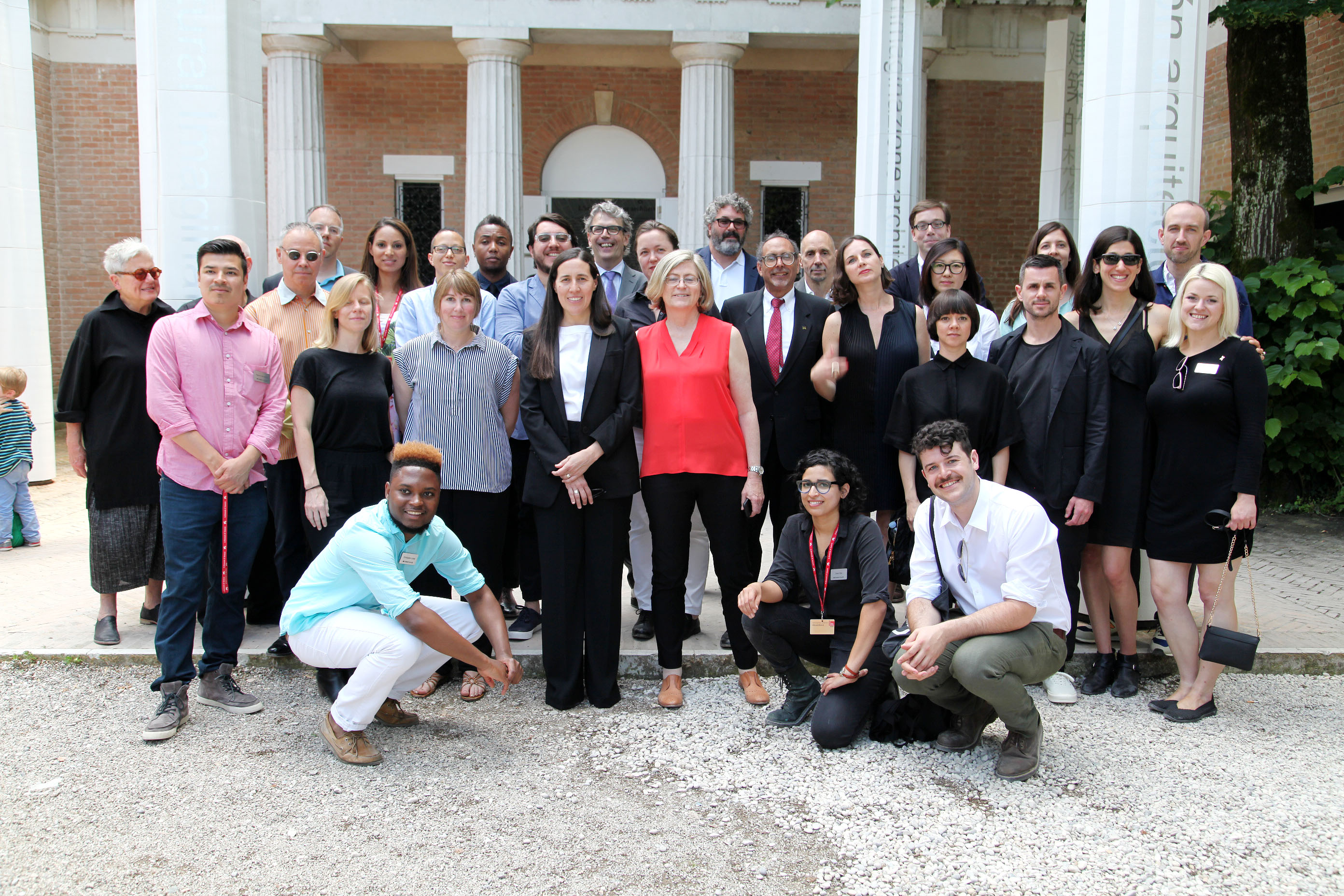





Monica Ponce de Leon’s cataLog essay for the Venice Biennale U.S. Pavilion Exhibition, 2016:
The United States Pavilion has a long tradition of mounting temporary installations in its courtyard to attract interest in both its art and architecture exhibitions. Needing to announce “The Architectural Imagination” exhibition, from the outset we understood the design of the courtyard as one of signage. This seemingly simple statement conjures up issues of representation in architecture – issues that have been well rehearsed yet never resolved, thus remaining simultaneously at the center and the margins of the discipline. While this problem may haunt architecture, in the context of an international biennale in which national representation is one of the expectations, the blurred distinction between architecture and sign is inescapable.
With this in mind, we set out to design architectural signage. The simplest vertical sign is a post that displays a name, but a single post would not make sufficient reference to the broad range of architectural thinking in “The Architectural Imagination,” thinking that also reflects the diversity of Detroit and the nation. To address this, we used the columns in the pavilion’s portico as a point of departure to transform the forecourt into an open-air hypostyle hall, but one in which the columns are displaced to allow access to the pavilion and to accommodate gatherings.
Of the 13 new columns, eight serve as totems displaying The Architectural Imagination in the eight languages most commonly spoken in Detroit today, and five are truncated to provide seating. The column design alludes to the fluting of their 1930s counterparts in the portico, but the new fluting derives from the geometric logic of different star shapes. Using robotic fabrication, we achieve the transformation of eight different geometries, seamlessly dissolving the fluting into a smooth cylinder before it touches the ground. Because the installation is temporary, the 10-foot-tall columns are built out of recyclable foam and coated with automotive paint to resist weathering. Their scale and language are architectural, but their material reveals their reality as signage.
In plan, the grid of columns refers to the grid of stars in the American and Detroit flags, the latter of which has 13 stars. A prime number, 13 seems to resist architecture. Thirteen columns do not make a regular grid; displacement is inevitable. But 13 is also not divisible, and thus always whole. In the courtyard, each star is its own figure with its own history, but together these figures make a new whole.
Location: Venice, Italy
Courtyard Installation for The Architectural Imagination, the U.S. Pavlion Exhibition at the 15th International Architecture Biennale curated by Cynthia Davidson and Monica Ponce de Leon and organized by University of Michigan Taubman College of Architecture and Urban Planning.
For more information: http://www.thearchitecturalimagination.org/
